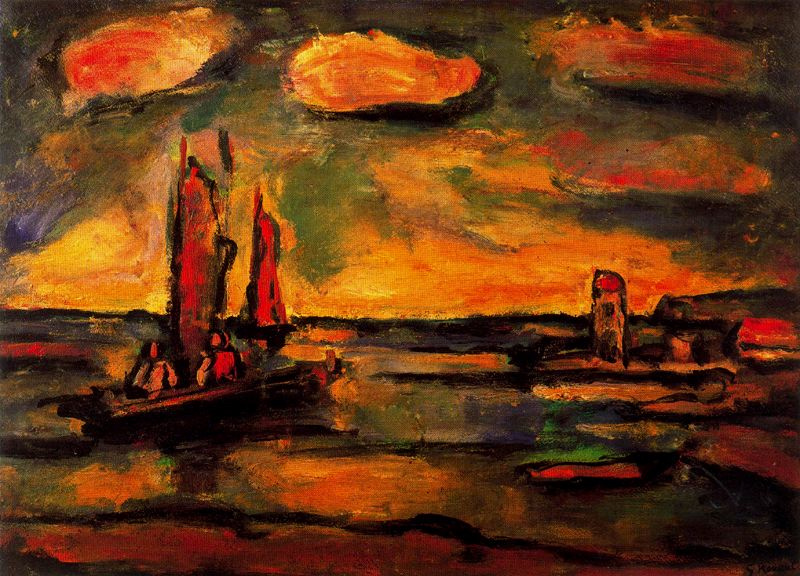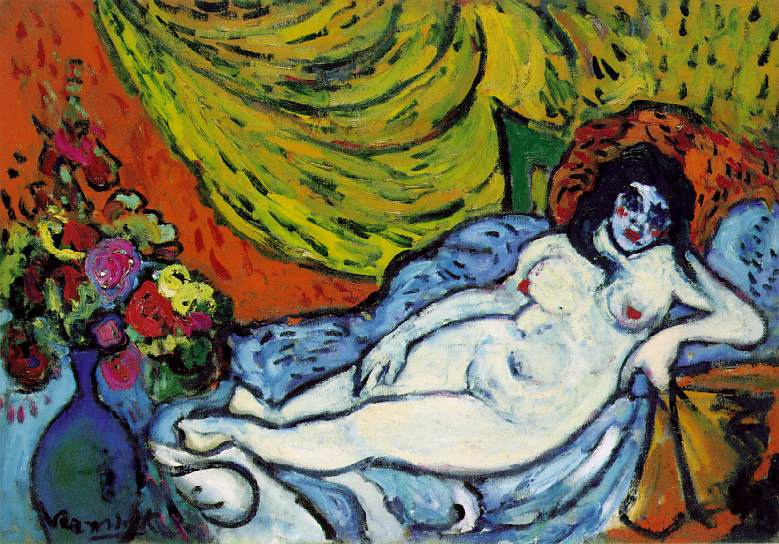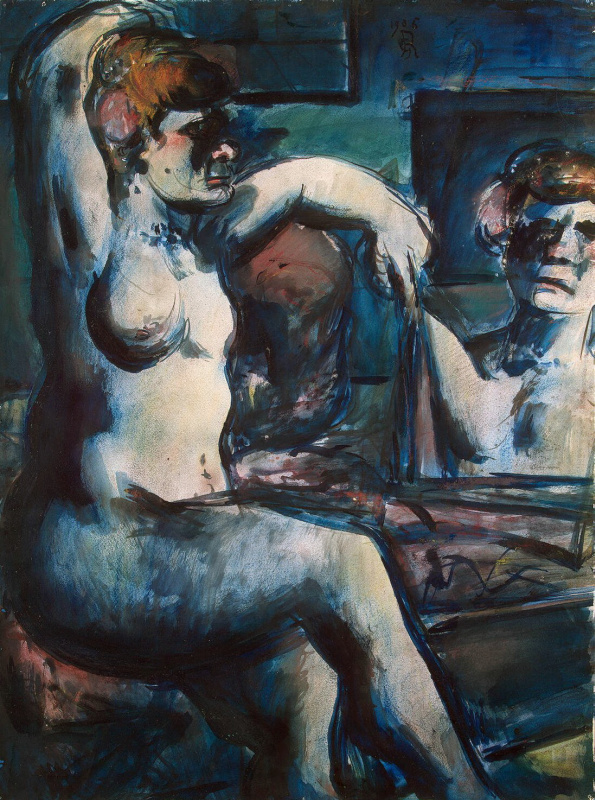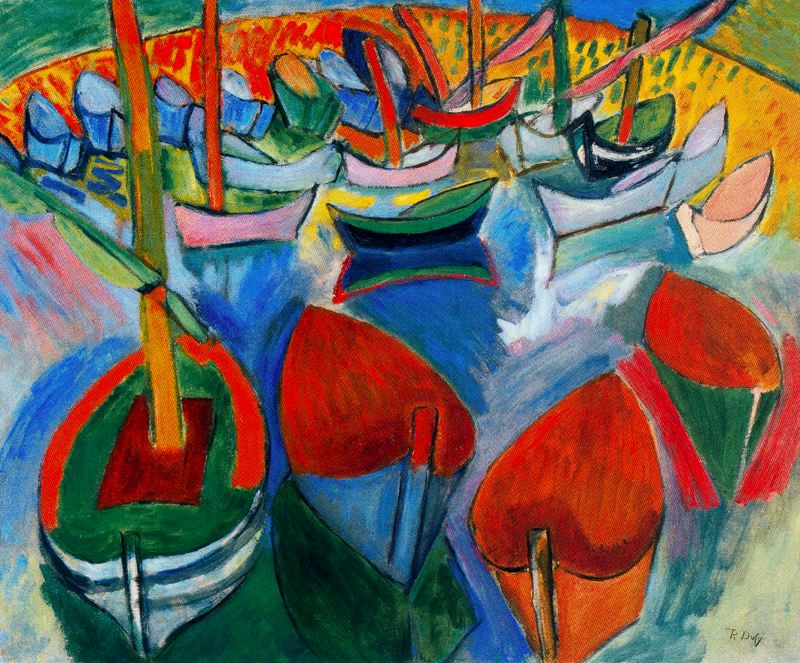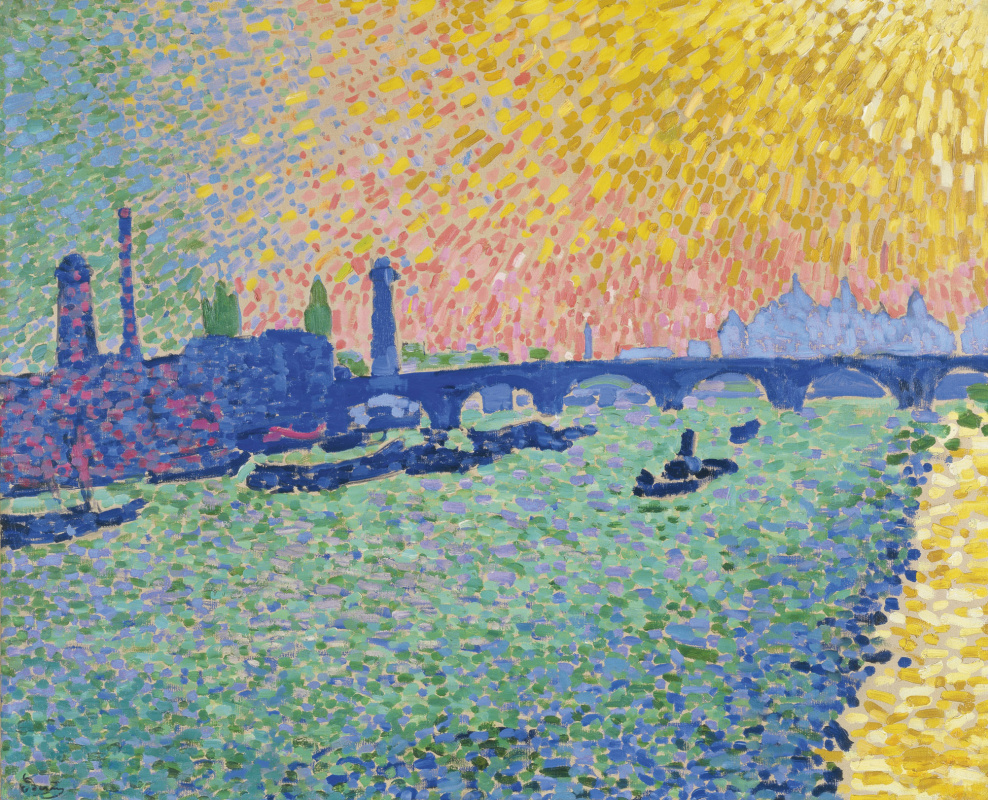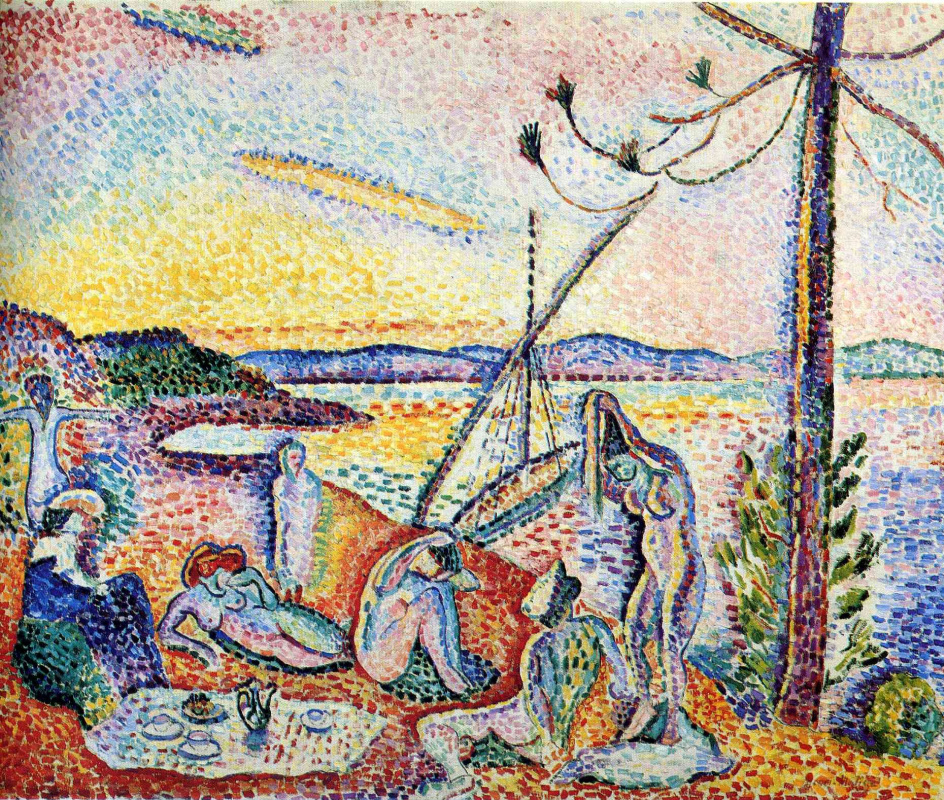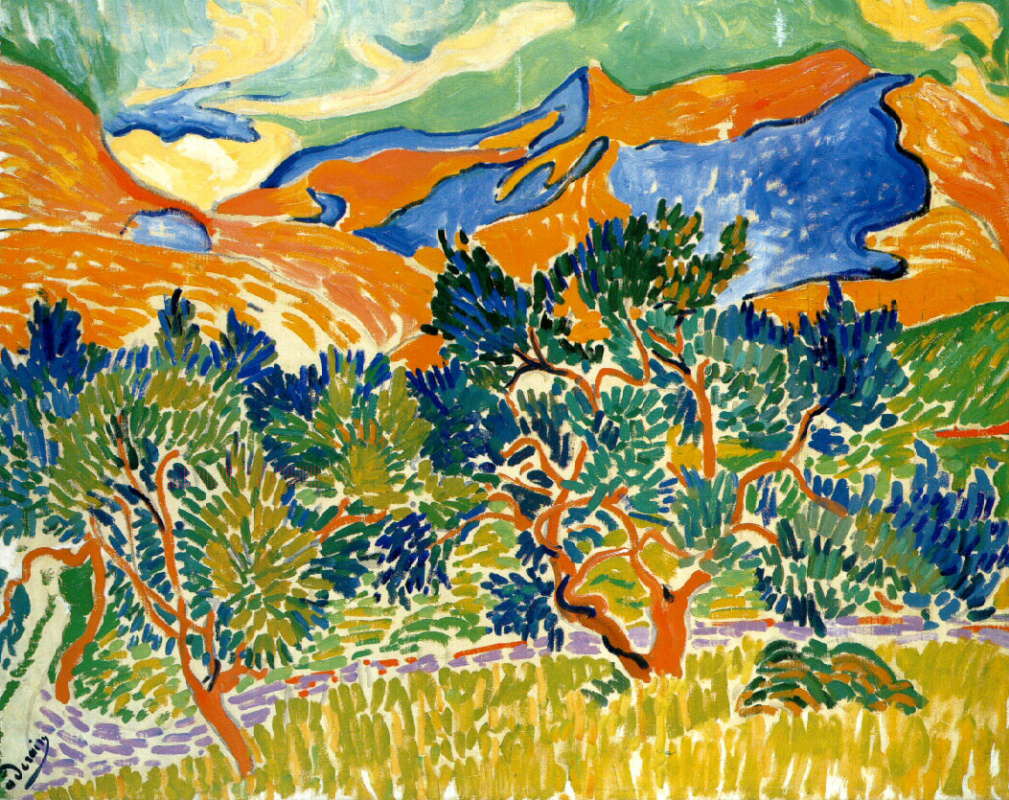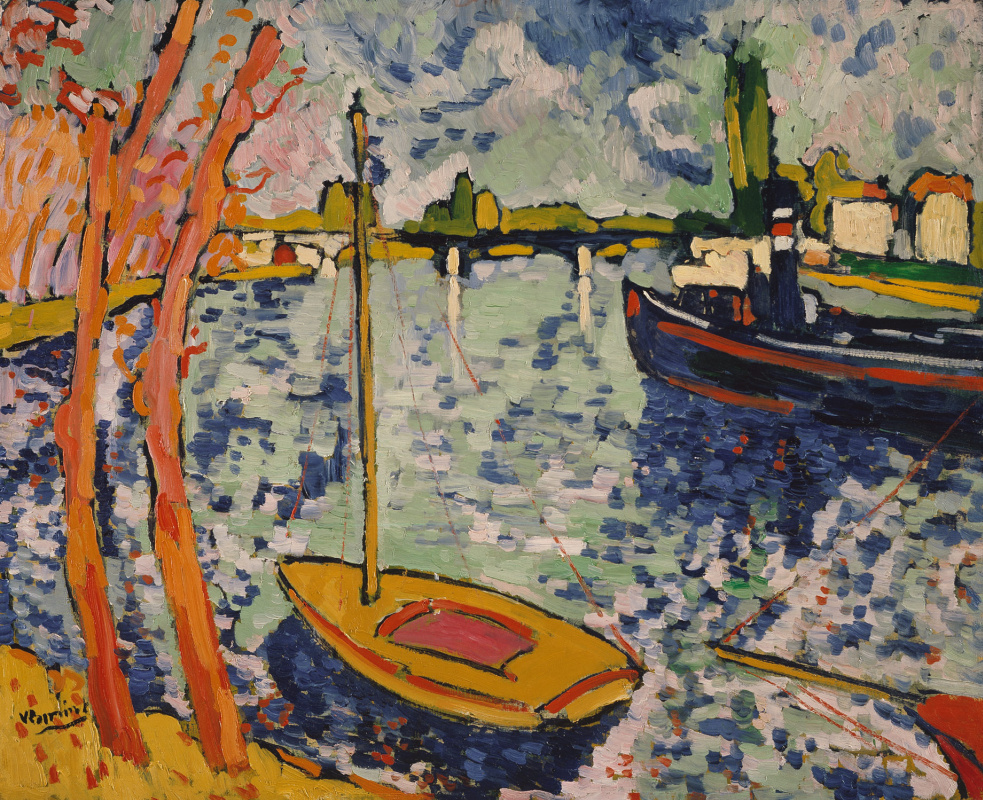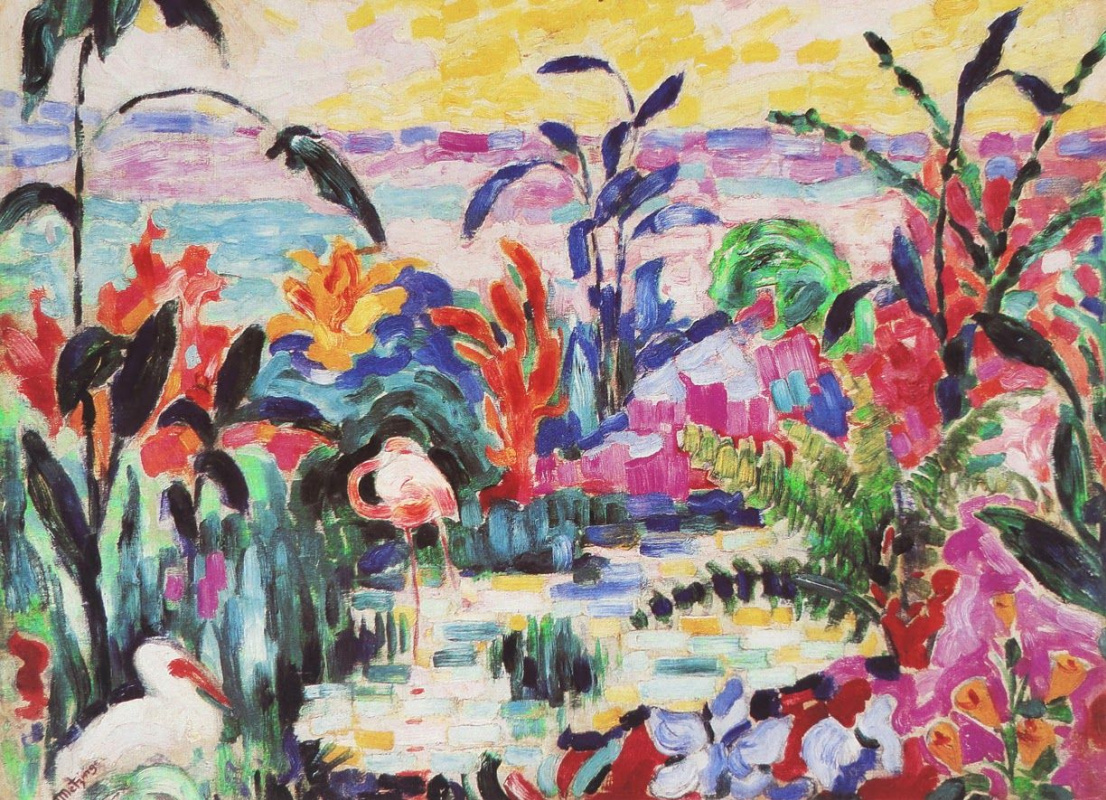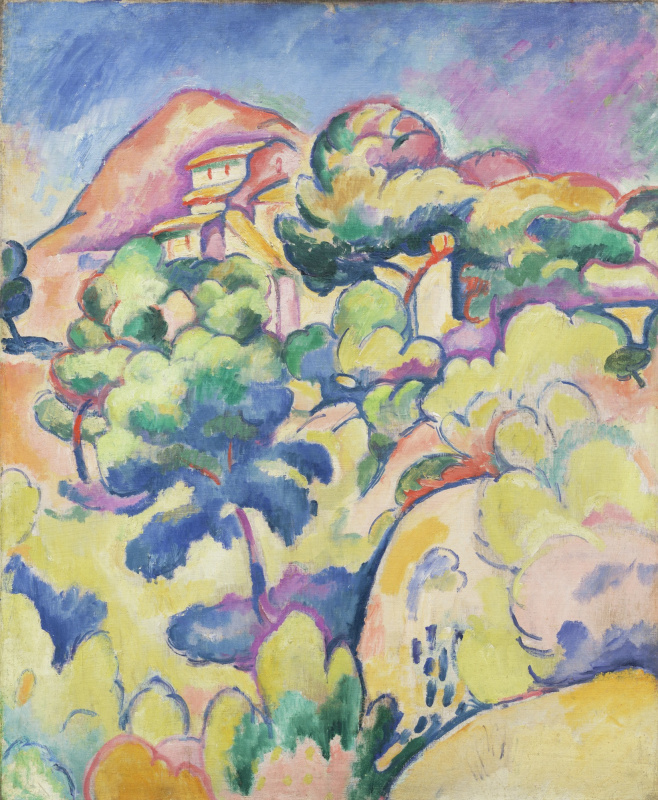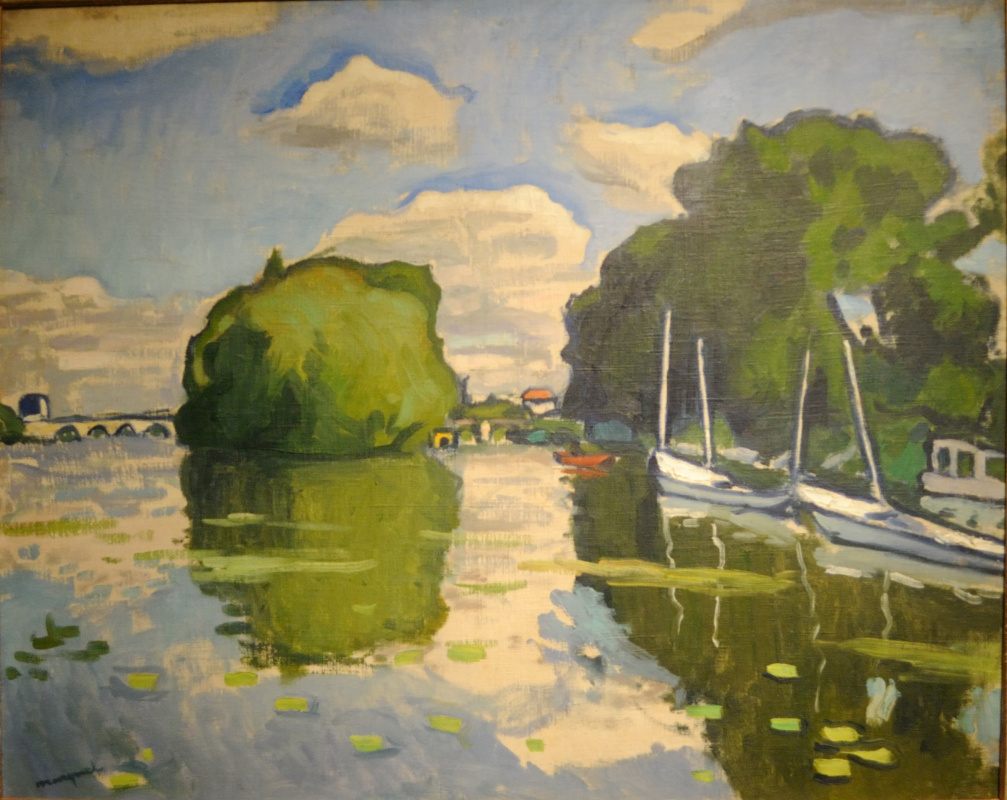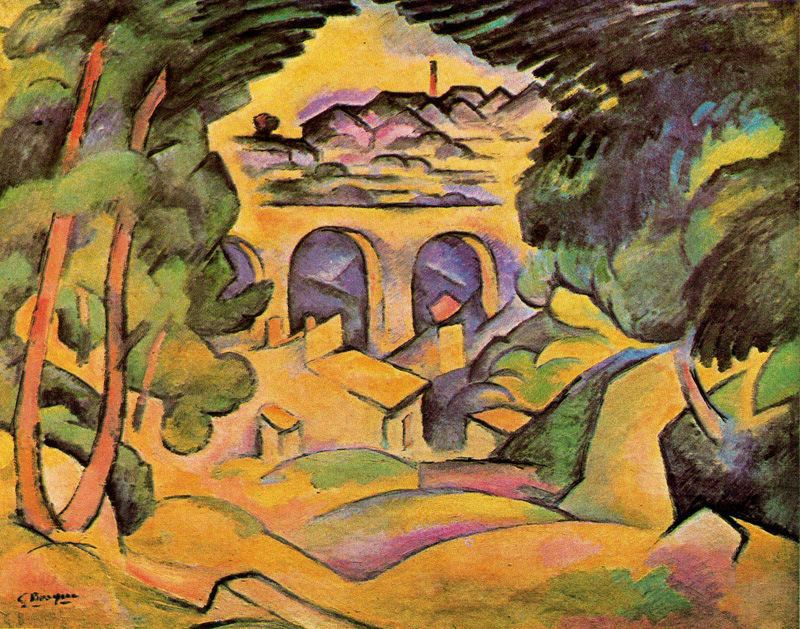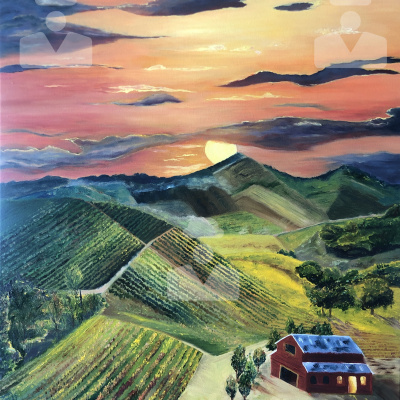Fauvism is considered the first avant-garde
art movement of the 20th century. It got its name in 1905, and it lived for only a couple of years, then each of the artists who called themselves the Fauves went deep into own creative search. The brightest representatives of the Fauvism are Henri Matisse, André Derain and Maurice de Vlaminck.

Forward to basics
Fauvism as an art movement began with the 1905 exhibition at the Salon d’Automne in Paris. The new and completely unexpected works of Henri Matisse, André Derain and Maurice de Vlaminck fascinated and shocked the public with flashy colours, violent expression and wild energy. One of the viewers was the art critic Louis Voxel, who called their paintings "an Orgy of colours," and the painters themselves dubbed as wild animals (from the French "fauve"). A more precise definition was difficult to choose, but the artists really enjoyed it, so the name became quickly widespread.
Three umbrellas
1906, 59.7×73.7 cm
However, Fauvism, despite its revolutionary nature, of course, could not appear from nowhere. The ground for its uprising was prepared by the Impressionists, and then generously fertilized by Vincent van Gogh, Paul Gauguin, Paul Cézanne and Georges Seurat. In a sense, Fauvism combined bright colour experiments of Post- and Neo-Impressionism and the momentary of Impressionist works, becoming a kind of synthesis of these artistic trends. Following the tradition of their predecessors, the Fauves abandoned the usual three-dimensional images and began to create a new artistic space, using flat areas and colour spots. Fauvism is often compared to German Expressionism, which appeared around the same time and also grew out of Post-Impressionism.
Parrot tulips
1905, 46×55 cm
Certainly, a significant impact on the Fauves was made by the Symbolist artist Gustave Moreau, who is often called the ideological inspirer of this movement. He was a Professor at the Paris School of fine arts, where Henri Matisse, Albert Marquet, Georges Rouault and many other artists studied in the 1890s. In his students, Moreau raised interest to the pure colour and taught them that one of the most important features of the great artist should be self-expression through one’s paintings.
The key points
• One of the most important and valuable things that the Fauves brought to the contemporary art was their radical idea of separating color from its descriptive, representative purpose and giving it the ability to exist on canvas as an independent element. The color could express a certain mood or form a structure within the picture, but it no longer needed to correspond to reality.• Another central artistic aim of the Fauves was the unity and balance of the composition. With the help of maximum simplification of forms and bright saturated colours, the artists attracted the viewer’s attention to the original plane of the canvas or sheet of paper, where each element in the picturesque space played its particular role. The immediate visual impression of such work had to be strong and thorough.
• The most important value of Fauvism was a personal statement. The artist’s immediate experience of his subjects, his emotional reaction to nature and intuition were more important than academic theory or poetic subjects. To achieve this goal, all the elements of painting were used.
The artists representing the Fauvism style: Henri Matisse, André Derain, Maurice de Vlaminck, Georges Rouault, Raoul Dufy, Albert Marquet, Jean Metzinger, Kees van Dongen, Georges Braque.
The subjects
Despite the fact that at first the art critics took the work of the Fauves not too favourably, many of the artists have become commercially successful after the Autumn Salon in 1905. During the following years, their paintings have occupied a prominent place in many exhibitions, including the Society of Independent Artists, where the paintings of the Fauves were put in a large room called "the lair of wild beasts". Meanwhile, other artists began to join the avant-garde trio of Matisse, Derain and de Vlaminck. They travelled together, worked together in the studios and willingly shared their ideas.Undoubtedly, the main value of Fauvism was colour as the means of self-expression. They could paint the sky in orange, and portray a human face with seemingly incongruous shades. As a result, it was not an accurate representation of reality, but an individual impression of the artist, fixed on the canvas. Colour determined the location of the composition elements on the canvas as well.
From the Notes of a Painter by Henri Matisse: "It did not interest me to copy an object. Why should I paint the outside of an apple, however exactly? What possible interest could there be in copying an object which nature provides in unlimited quantities and which one could always conceive more beautiful? What is significant is the relation of the object to the artist, to his personality and his power to arrange his sensations and emotions."
Focused on colour and form, the Fauves didn’t really care about choosing fundamentally new and unusual subjects. Unlike their predecessors, who often painted scenes from modern city life, the Fauves usually chose traditional subjects: portraits, landscapes, marinas and interiors. By and large, they perceived nature and people more as objects for observation and a source of emotions that can be expressed on canvas.
Bridge , river view
1906, 80.5×101 cm
Still life
1908, 44×54 cm
Another unifying element for the Fauves was their interest in African art. From his trip to Morocco, Henri Matisse brought to Paris new ideas about the use of flowers and ornaments. Human figures in his works, inspired by African sculptures, become even more simplified, and the limbs — angular. The Fauves' use of non-Western culture as a source of inspiration had a huge impact on the young Pablo Picasso. A short African period in his work, which began with the legendary Les Demoiselles d’Avignon (The Young Ladies of Avignon), eventually led the artist to Cubism.
The Fauvism crib
Significant works
Luxury, peace and pleasure
1904, 118×98 cm
This early work of Henri Matisse clearly shows the influence of his two predecessors — the Pointillist Georges Seurat and the Divisionist Paul Signac. Just like them, Matisse used here tiny brushstrokes to create a sense of visual jitter. However, there is one significant difference, which lies in the location of concentrated areas of pure colour. Matisse’s orange, yellow and green shades do not merge to form a harmonious tonality, like that of Seurat or Signac. Instead, each colour takes up a certain place, enhancing the dizzying effect created by the dots. The artist borrowed the name of this painting — Luxe, calme et volupté (Luxury, peace and pleasure) from the poem by Charles Baudelaire L’Invitation au voyage (Invitation to a Voyage).
Yachts in Le Havre
1904, 67.3×79.5 cm
Following Claude Monet and Eugène Boudin, Raoul Dufy painted many scenes on the north-western French coast, in the port city of Le Havre. In this painting, he captured several moored yachts against the background of local architecture. And although the image looks very naturalistic, the artist’s rejection of the traditional perspective and the unusual use of paint make this work more avant-garde
. The composition is broken due to the sharp diagonal line of the berth in the left part of the canvas. Dufy painted waves with swiftly curved brushstrokes, denoted buildings on the background with tiny rectangles and roughly simplified the figures of pedestrians. The artist turned the flags decorating the vessel in the centre of the composition into small abstractions. The lack of careful detail creates an effect of freedom and freshness, which is enhanced by the fact that the artist left some pieces of the canvas unpainted.
Mountains at Collioure
1905, 81.3×100.3 cm
One of the most famous statements by André Derain sounds like this: "I used colour as a means of expressing my emotion and not as a transcription of nature." This painting was created in the summer of 1905, which the artist, together with Henri Matisse, spent in Collioure in the south of France. In the same year, the work was exhibited at the Autumn Salon. The way Derain painted the land, grass and trees with long, separate brushstrokes, gives this landscape
a resemblance to the works of the Divisionists. At the same time, he used colours that were far from natural. The trunks of the trees became bright red, and the mountains were composed of clearly delimited areas of orange and purple. The sharp contrast of these colours, the lack of chiaroscuro and spatial depth, allowed Derain to convey with amazing accuracy a sense of vitality and hot Mediterranean sun.
The Seine river in Chatou
1906, 81.6×101 cm
Since 1901, Maurice de Vlaminck and André Derain had been sharing a studio in Chatou, a suburb of Paris. In this painting, the artist depicted a part of the Seine flowing through the city. Here de Vlaminck used a technique called impasto, which was practised by many Fauves: thick strokes of paint were applied to the canvas directly from the tubes and then joined together with short brushstrokes, creating the effect of movement. To paint the sky and water, the artist used several blue and green shades, highlighting the shimmering white patches of light with intermittent strokes. The feeling of light and movement is emphasized by the contrasting red-orange trees on the left side of the canvas and a yellow-red boat. Detail and traditional perspective no longer mattered, retreating before a relentless sense of joy. De Vlaminck said: "I try to paint with my heart and my guts without worrying about style."
In the circus (the Mad clown)
1907, 75.1×57.1 cm
Georges Rouault was a student of Gustave Moreau and a friend of Henri Matisse, but his early works, considered Fauvist, differ from the paintings of the artists of the same movement in the choice of subjects and colours. Like many other Fauves, Rouault worked in the impasto technique and used dense strokes, but he preferred a rather gloomy colour scheme, which best suited for displaying human suffering. In Rouault’s paintings there often appeared the theme of the circus, like that of his contemporary Pablo Picasso’s works of the early 1900's. But he always portrayed clowns and acrobats behind the scenes, where under the bright stage make-up one can see the emotional pain and loneliness. The artist was often criticized for the fact that the subjects of his paintings were representatives of the "underclass": prostitutes, vagabonds, circus performers and workers. After some time, Rouault’s paths with the Fauves completely diverged, and he focused on satirical stories that exposed social inequality, corruption, and abuse of power.
Dance (II)
1910, 260×391 cm
The Dance and its close relative Music are the late fauvist paintings by Henri Matisse, which became the culmination of his work in this style. Both these huge paintings were commissioned to the artist by the Russian patron of avant-garde art Sergei Shchukin. The eternal motif of figures whirling in dance had always served as a symbol of harmony, freedom and happiness. Matisse deliberately simplified and distorted the figures of the dancers, painted their bodies in a far from naturalistic colour and placed his subjects on almost "bare" background, thereby emphasizing the primitive aspect of the dance. The figures bend and abut against the edges of the painting as if the boundaries of the canvas can barely restrain them. One can only imagine how the Dance puzzled and shocked the audience when it was first presented to the public at the Autumn salon in 1910.
You are an expert if you: know that the Fauves' experiments with colours and shapes largely predetermined the development of all contemporary art in a very short time.
You are a layman if you: believe that the orange-lilac mountains and red trees have no right to be painted because they don’t exist in the real world.
You are a layman if you: believe that the orange-lilac mountains and red trees have no right to be painted because they don’t exist in the real world.
The decay products
Despite the fact that Fauvism had an impressive impact on the development of avant-garde artistic trends and modern painting in general, it did not last long. The movement, which was born from a contradiction between norms and traditions, eventually became too common. By 1907, dozens of French artists began to call themselves Fauves, denying all provocations and rebelliousness.Moreover, ambitious newcomers began to challenge the Fauves themselves. Artists began to understand that they were replaced by a new generation of creators even more free and open to everything, who did not care about any authorities. In case of Matisse, for example, this resulted in a serious rivalry with Pablo Picasso, in which both artists were forced to change and develop continuously. And Matisse began to strive for even greater simplification in his work, without losing expressiveness.
Figurine and vases on Oriental carpet
1908, 89×104 cm
The Seine at Poissy
1908
A turning point for many Fauves was the death of Paul Cézanne and his retrospective exhibition in 1907, which sparked a new surge of interest in his orderly and structured style. Soon Georges Braque, for example, began to give preference to a more relaxed and limited colour palette, paying more attention to fine gradations of colour. Then he quite naturally came to Cubism. Commenting on one of his moving away from Fauvism, Braque said: "It is impossible to remain in a state of paroxysm forever".
Since about 1908, the Fauves began to move gradually in different directions. Braque found a new ally in Picasso, Derain also briefly devoted himself to Cubism, and the palette and the subjects of de Vlaminck became gloomier. In the end, other Fauves such as Marquet, Dufy and Rouault began to work in other styles.
Since about 1908, the Fauves began to move gradually in different directions. Braque found a new ally in Picasso, Derain also briefly devoted himself to Cubism, and the palette and the subjects of de Vlaminck became gloomier. In the end, other Fauves such as Marquet, Dufy and Rouault began to work in other styles.
Viaduct near Estaca
1908, 65×80 cm
Because of their belief in the emotional power of colour, the Fauves, so to speak, have created a new form of feeling and perception in contemporary art. The fact that they had never been a closed circle with clear rules, manifests and aesthetic norms, paradoxically only increased the influence of Fauvism on the entire European avant-garde
. Spread far beyond Paris, the ideas of the Fauves continued to soar in the art world for decades. Cubism, Orphism, and later Abstract Expressionism are largely obliged to the couple of years in the early twentieth century, when Matisse, Derain, de Vlaminck and their followers experimented with their "wild" colours.
Cover illustration: Boats at Collioure, Andre Derain. 1905








